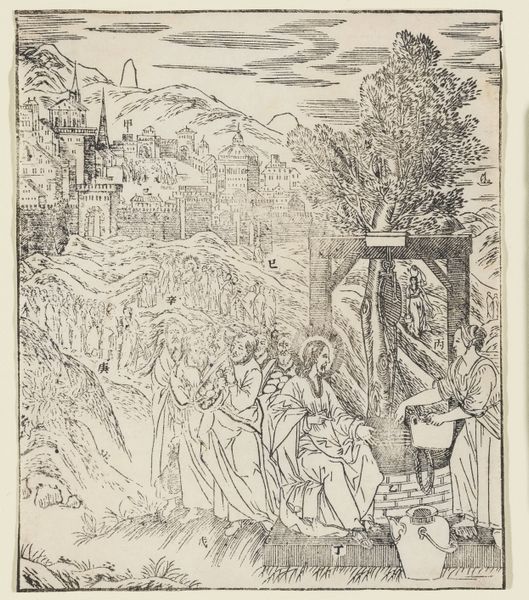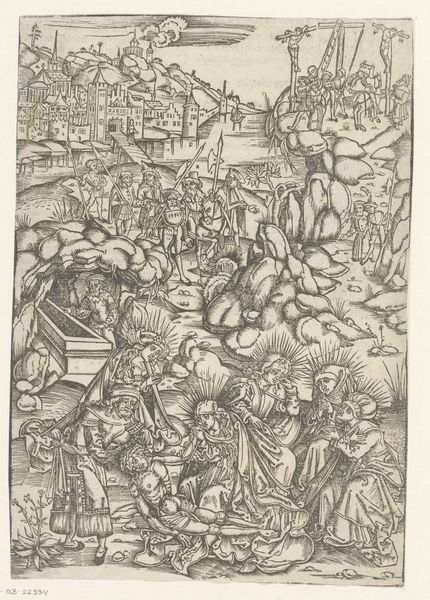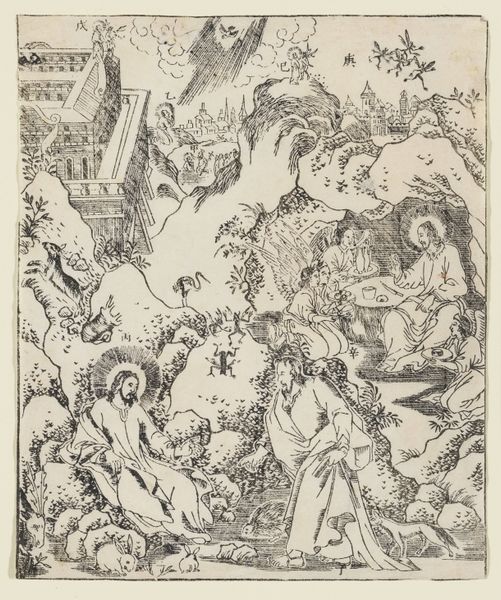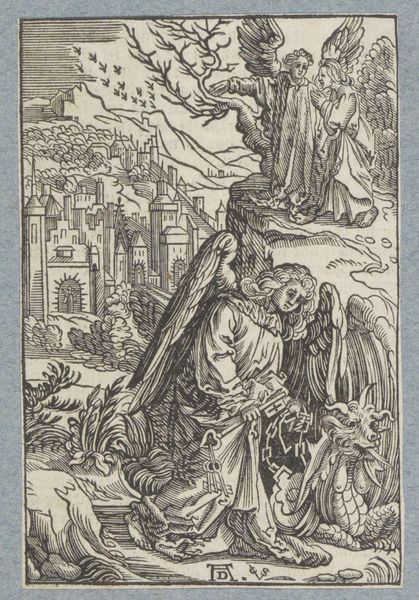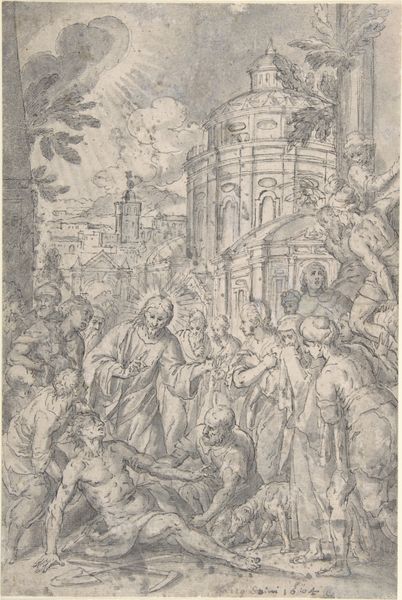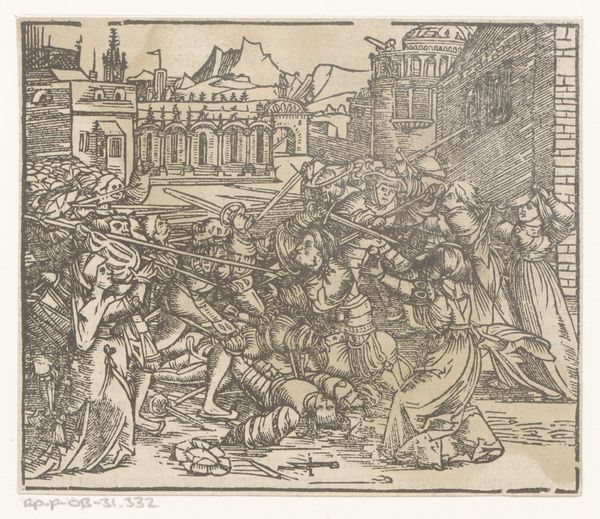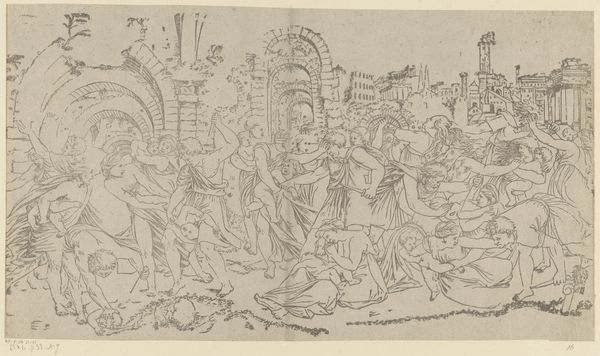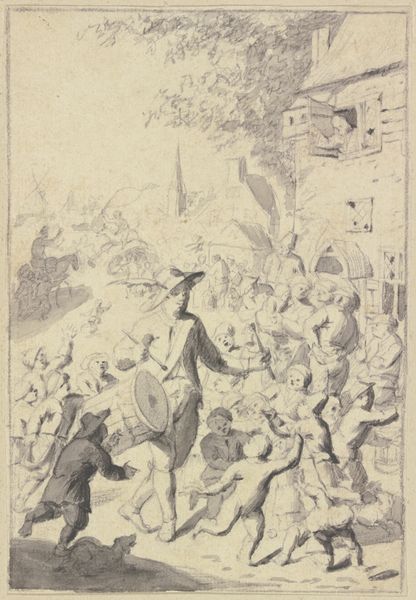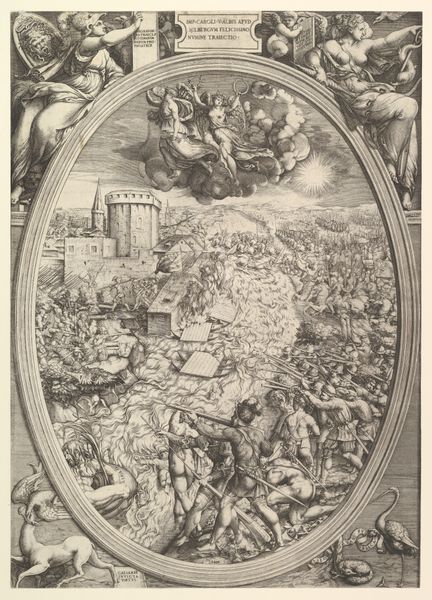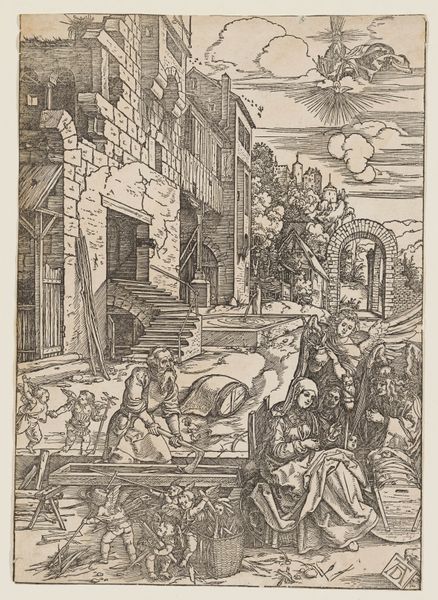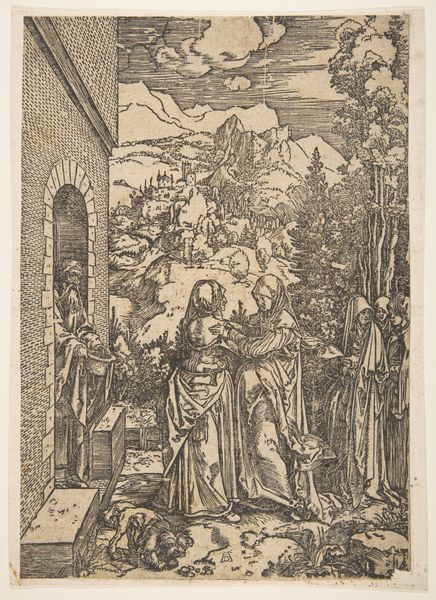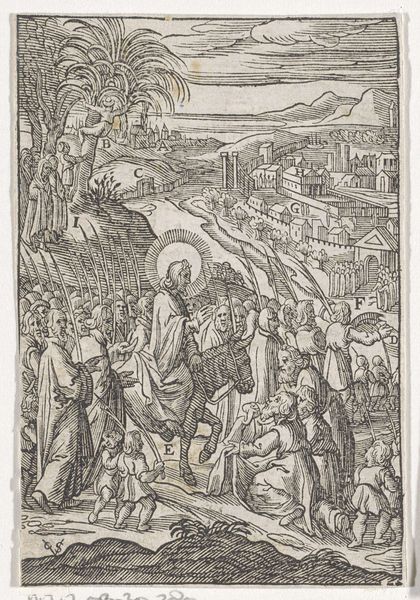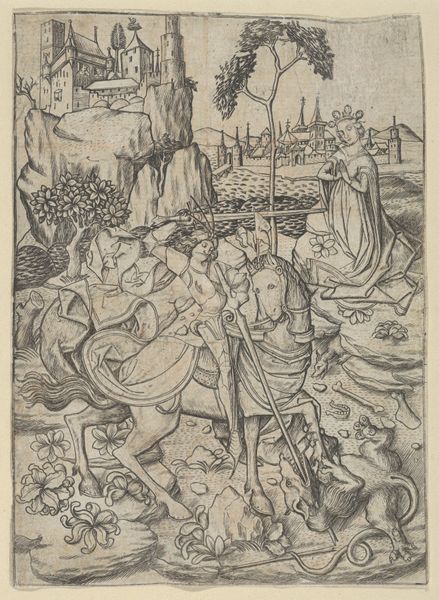
print, woodcut
# print
#
landscape
#
figuration
#
woodcut
#
history-painting
#
italian-renaissance
Dimensions: 6 1/2 x 5 9/16 in. (16.51 x 14.13 cm) (image)
Copyright: Public Domain
Editor: Here we have an intriguing print, “The Adoration of the Magi,” created as a woodcut in 1637. It's currently held at the Minneapolis Institute of Art. What immediately grabs me is the elaborate landscape framing this iconic biblical scene. What kind of context can you provide for the imagery we're seeing? Curator: It's fascinating how the artist blends the sacred with the secular, isn't it? Think about the role religious imagery played in the 17th century. Prints like this weren't just devotional objects; they were also powerful tools for disseminating religious and political ideas, and reflecting civic pride. Does the landscape seem specific to you, or generalized? Editor: That’s interesting. I assumed it was generalized, more of a stage for the adoration scene. Curator: Look closer at the architecture in the background. Does any of it hint at the patron or location where this woodcut may have circulated? Or think about who controlled the means of distribution back then. Editor: I see a domed building…perhaps Rome? So this print would reflect the power structures and possibly promote the Counter-Reformation efforts within Italy at that time? I never really considered prints in this way. Curator: Precisely! These prints could be commissioned by religious orders, wealthy families, or even the artists themselves to bolster their reputations and reinforce specific social or political agendas. The imagery had power beyond simple illustration; it had a persuasive power. Editor: So, in looking at art like this, we need to look beyond just the subject, like the Adoration itself, but also at who commissioned it, who distributed it, and what social message it aimed to project. This shifts my focus completely! Thank you for making me aware of these key contextual layers. Curator: Absolutely! Recognizing that art always functions within a web of social and institutional forces gives you a richer understanding and a more critical perspective on visual culture.
Comments
No comments
Be the first to comment and join the conversation on the ultimate creative platform.
